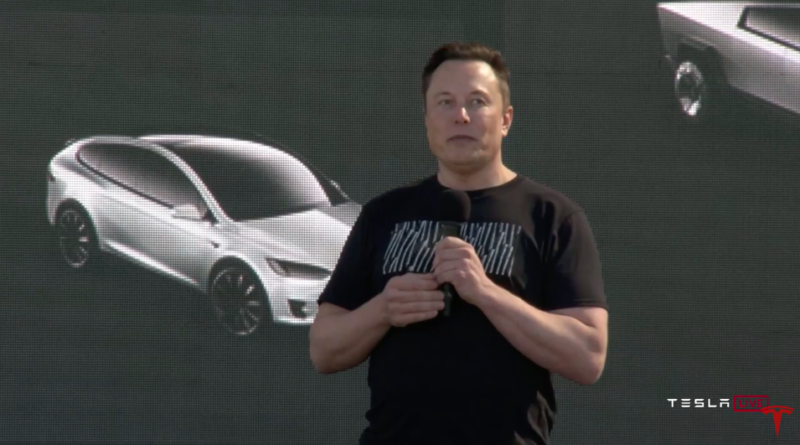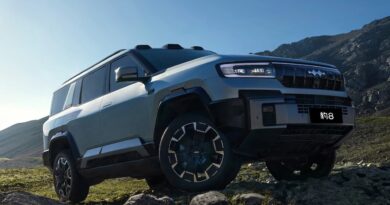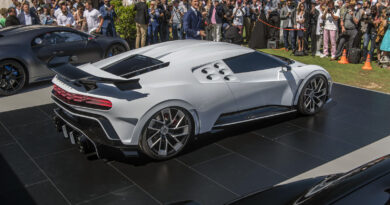Tesla to halve battery prices: Elon Musk outlines the five revolutionary steps needed to do it
Tesla boss Elon Musk has used his company’s much-hyped Battery Day presentation to outline a long-term five-step process that will lead to cheaper, more energy-dense batteries.
The new batteries – said to be half the price of existing battery tech – will feature in everything from the incoming Tesla Model 2 planned for 2023 to the Tesla Semi, and everything in between.
While many hoped Musk would use this morning’s presentation to outline immediate breakthroughs in battery technology, he instead focused on a longer-term vision, outlining the work that would be done between now and 2030 to both lower the cost of battery production and increase their capacity.
None of the steps are easy, with most requiring new materials, processes or manufacturing facilities, but Musk is predictably confident all can be achieved, delivering a total 54 percent increase in the range for Tesla vehicles, a 56 percent decrease in the cost per kWh to produce, and a 69 percent drop in the cost per gWh.
Battery cell design

The five-step process begins with a new cell design that introduces a world-first tabless 80mm by 46mm cell, replacing the 2170 cells used in Teslas today.
The catch is that the technology doesn’t currently exist, with Tesla’s current cell providers – mainly Panasonic – using 2170 cells. So Tesla will take the prototype production in-house, with a view to produce at least some its own cells in the coming years. But more on that in just a moment.
The new tabless architecture minimises thermal losses, and, through a new “shingled architecture”, also shrinks the distance the electrons have to travel on their electrical path from 250mm to 50mm.
“That’s very important to appreciate,” Musk says. “Basically the distance an electron has to travel is much less, so you actually have a shorter path length in large tabless cell than you have in a smaller cell with tabs.
“This is a big deal. Even though the cell is bigger, the power to weight ratio is actually better. Nobody has done it before.”
Tesla says the new cell design can store five times as much energy, deliver six times as much power, and will increase driving range by up to 16 per cent. Also important, from a cost-to-build view, a tabless cell greatly decreases manufacturing complexity.
“It’s a real pain in the arse to have tabs, from a production standpoint,” Musk says.
New Tesla cell factory
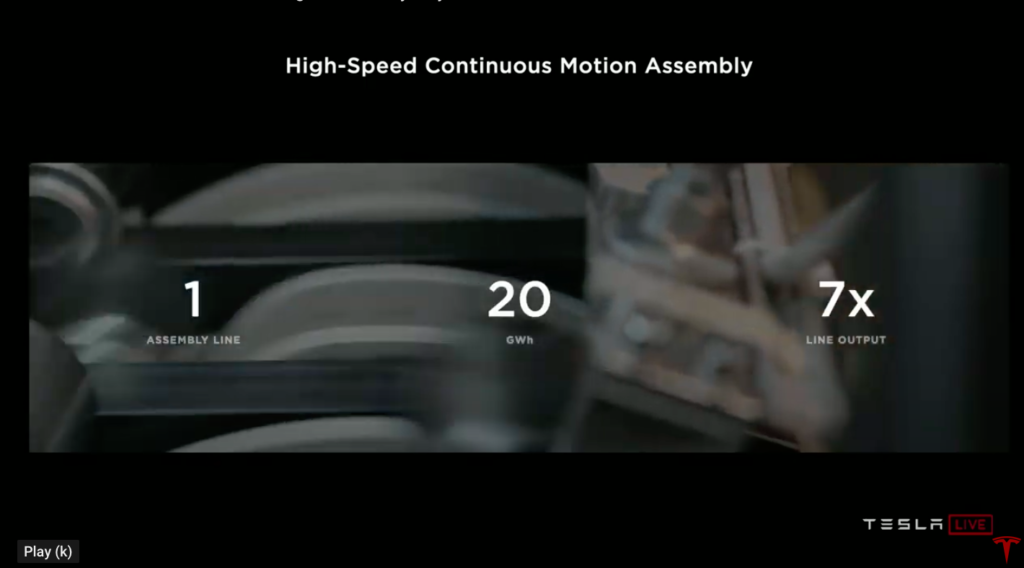
Musk plans to ramp up Tesla’s cell production capacity, focusing first on a pilot factory in the USA which will deliver some 100gWh within 18 months, before expanding through other facilities.
Tesla is shouting about a range of innovations that will exist within its own facilities, including the tabless cells, but also a new dry-coating for electrodes that will vastly simplify the manufacturing process (though Musk concedes that latter isn’t “totally working” yet), and will result in a 10x reduction in plant footprint, and a 10x reduction in energy use.
The plant will also change up the assembly line, reduce its footprint, and introduce a whole range of manufacturing evolutions that will result in a facility four times more efficient than the current industry standard.
The pilot plant will be producing 100gWh by 2022, with Tesla’s facilities expected to produce 3000gWh by 2030.
“And this is just Tesla’s internal cell production,” Musk says. We will continue to use our cell suppliers – this is supplemental to what we buy from suppliers.”
“It allows us to make a lot more cars and a lot more stationary storage, and long -term, we are expediting to make in the order of 3000gWh per year. I think we have good changes achieving this before 2030.”
Silicon as a key anode material
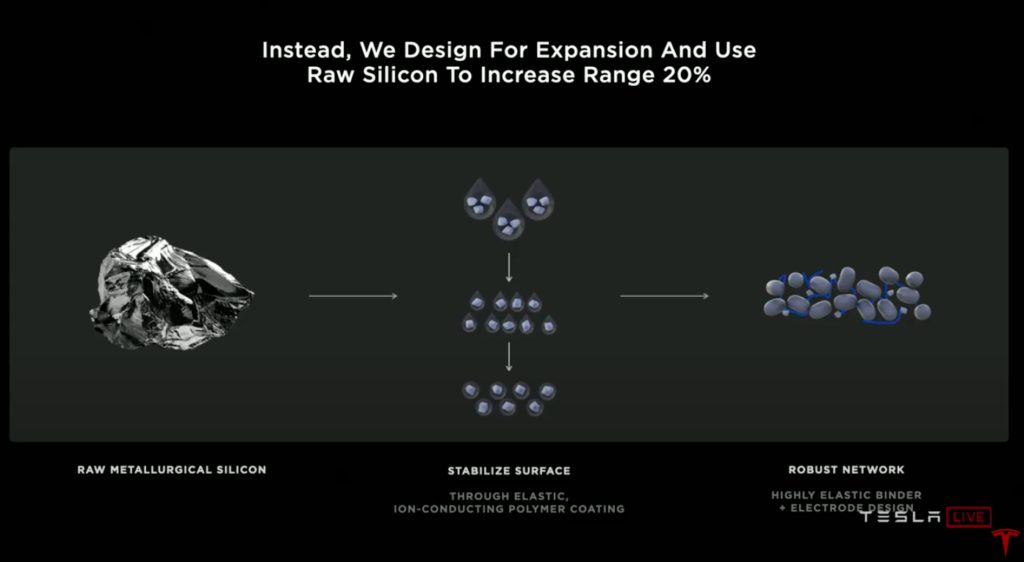
Silicon is the future of Tesla’s cell production, with the brand today unveiling new technology claimed to essentially solves the challenges that have so far prevented other manufacturers using more silicon than they do today.
The solution, says Musk, is rather than using an engineered silicon – SIO glass, graphite or nanowires – Tesla will pioneer a process that uses silicon in its raw metallurgical state.
That alone is claimed to lower the cost of that component of the battery manufacturing to around US$1.20 per kWH (shaving around 5 percent off the overall battery cost), and increasing the range of Tesla vehicles by 20 percent.
“It’s not just cheaper, but it delivers a longer range,” says Musk.
Cathode material
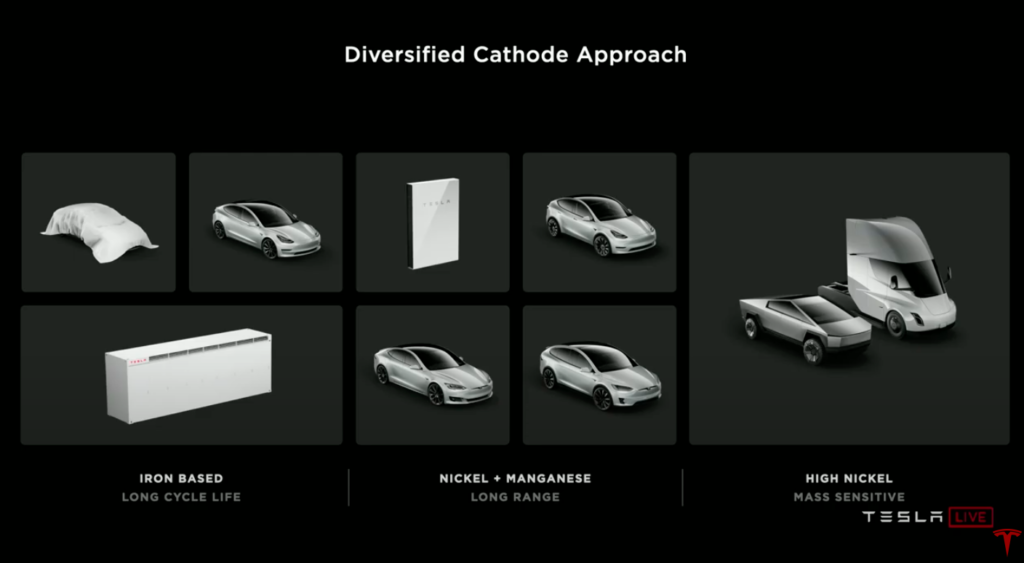
Tesla describes cathode material (usually cobalt, nickel or iron) as “like a bookshelf. You need a stable structure to contain the ions. You need one that doesn’t crumble, holds its shape, so as you’re moving the ions back and forth it retains its strucute. If if doesn’t, your battery life drops significantly.”
Cobalt is among the most stable structures, but it’s also sometimes mined in terrible conditions, is expensive, and is less efficient than nickel.
Tesla’s solution is nickel, but it creates its own stability issues. Tesla, though, says it’s solved them with its High Nickel Cathode, which will remove the need for cobalt entirely from its batteries.
Tesla will take a multi-prong approach, using iron-based cathodes for its smaller, cheaper vehicles, a nickel-manganese solution for its longer range cars, and the High Nickel Cathode for vehicles like the Cybertruck and Tesla Semi.
Cell vehicle integration
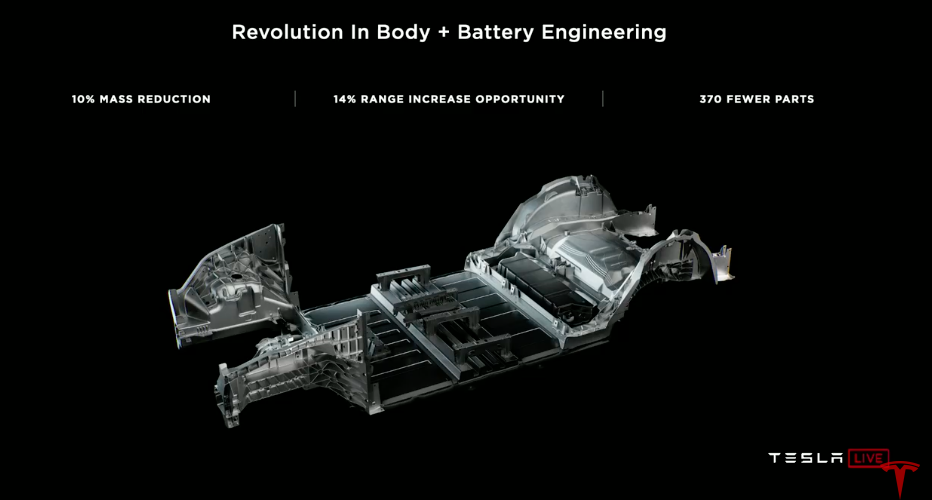
The final and perhaps most noticeable (to drivers, at least) step is a key change in the way the batteries are integrated into the vehicle, making Tesla cars lighter and stiffer as a result.
Musk referenced aircraft design when describing the change, pointing out that earlier planes carried their fuel as cargo, before someone happened upon the idea to shape the fuel tanks as wings so they perform a purpose without taking up space.
“Your wing is now just a fuel tank in wing shape. And this is the way to do it, the tank serves a dual function, it’s not just cargo,” he says.
“We’re doing the same for cars. It allows us to pack the cells more densely, because we don’t have supports or stabilisers or structural elements, because the pack itself will be structural.”
Essentially, Tesla will be gluing the cells directly to the top and bottom steel sheets of the vehicle, rather than house them in individual packs, meaning Tesla can not just fit more in, but reduce excess weight in the process.
“It makes for an incredibly stiff structure. This is really major. it’s a 10 percent mass production, a 14 percent range increase, and 370 fewer parts,” Musk says.
“Any cars that do not take this architecture will not be competitive.”

